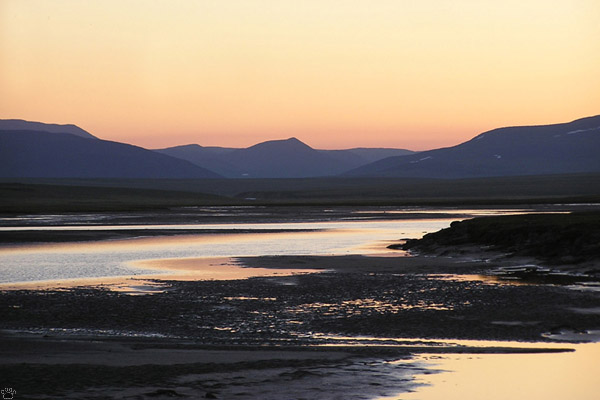
Tidal flats, Russkaya Koshka Spit, Chukotka, Russia. |
Chukotka, Part 4: Coastal spits (continued)
Of all bird species inhabiting sand spits of Chukotka, sandpipers are the most diverse group. Sixteen species nest here, and at least seven more show up during migration.
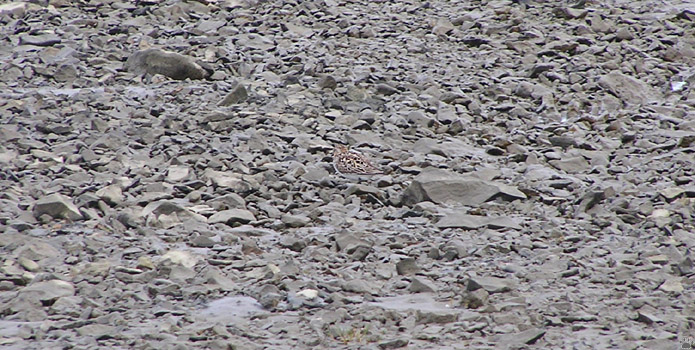
Semipalmated sandpiper (Calidris pusilla), Belyaka Spit. |
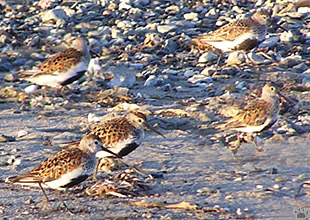
Dunlins (C. alpina), Russkaya Koshka Spit. |
Small sandpipers are also the only Arctic birds that can be really difficult to identify. |

Rock sandpiper (C. ptilocnemis), Belyaka Spit. |
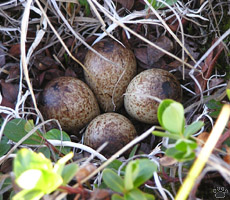 |
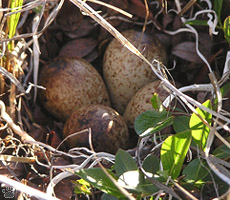 |
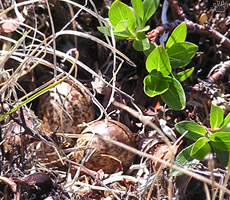 |
| Nests of red-necked stint (C. ruficollis), Belyaka Spit. |
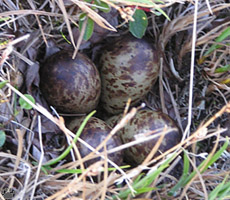
Dunlin nest, Belyaka Spit. |
Small sandpipers almost always lay four eggs. They lose a lot of clutches and chicks to bad weather and predators (from lemmings and gulls to bears and reindeer, but especially to skuas and Arctic foxes). Their chicks look so delicate and vulnerable, it's hard to imagine how any of them manage to survive in the cold, windy, merciless world of coastal spits. |
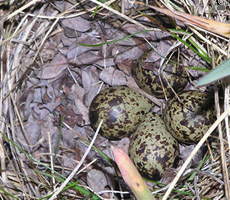
Red-necked phalarope (Phalaropus lobatus) nest. |
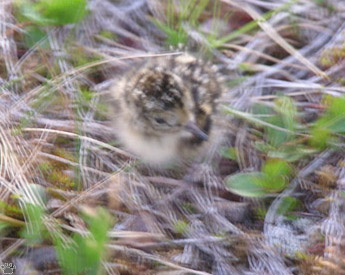 |
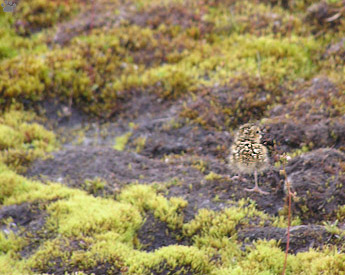 |
| Temmink's stint (C. temminckii) chicks, Ioanna River spit. |
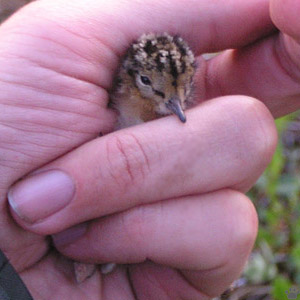
Temmink's stint chick, Ioanna River spit. |
Various sandpiper species differ in their behavior at nest. Temmink's stint are particularly tame, so their nests and chicks are relatively easy to find. |
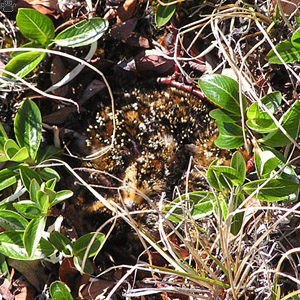
Dunlin nest with chicks, Belyaka Spit. |
 |
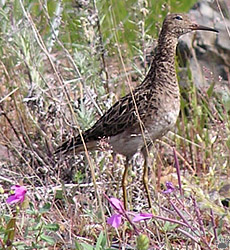 |
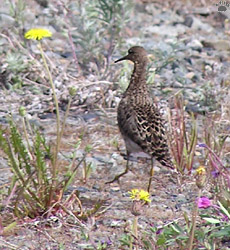 |
| Reeve (Philomachus pugnax), Kazachka River delta. |
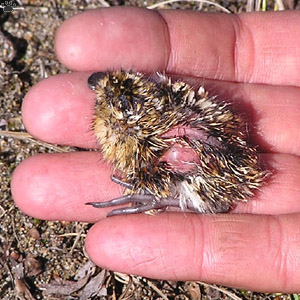
Spoon-billed sandpiper (C. pygmaeus) chick, Belyaka Spit. |
Spoon-billed sandpiper nests only on coastal spits. It's the rarest bird of the Arctic: the population has dropped from 2000 to 200 in six years due to loss of migration stopover sites in Korea. |
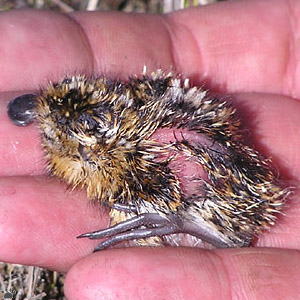
Spoon-billed sandpiper chick, Belyaka Spit. |
 |
 |
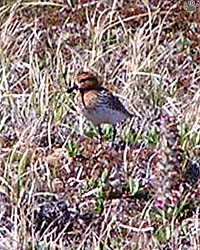 |
| Spoon-billed sandpipers (nest in the middle), Belyaka Spit. |

Marsh marigold (Caltha palustris ssp. arctica) is a common lake plant
of coastal spits. Belyaka Spit. |
Spoon-billed sandpipers nest along the outer side of the spits, and feed on numerous small tundra lakes. They apparently use their weird bills to get tiny invertebrates from the mud. |

Northern pintail (Anas acuta) is common on tundra lakes all over
Chukotka. Belyaka Spit. |

Long-tailed ducks (Clangula hyemalis), Russkaya Koshka Spit. |
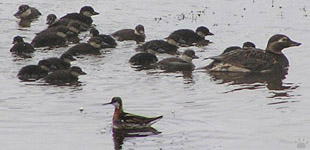
Long-tailed ducks and a red-necked phalarope, Russkaya Koshka Spit. |
These shallow lakes have cold clear water, little or no fish, but lots of birds. |
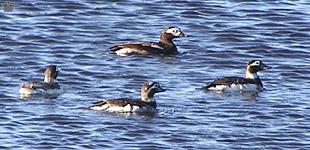
Long-tailed ducks, Belyaka Spit. |
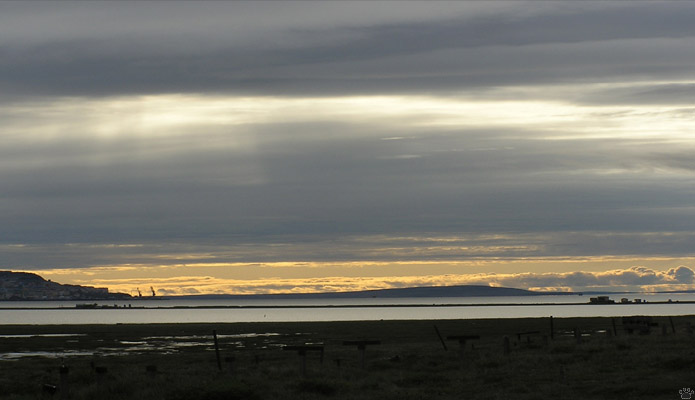
This small gravel spit not far from Anadyr Airport is one of the best birdwatching sites on Chukotka. |
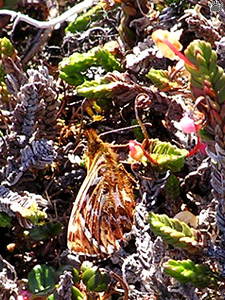
Fritillary (Boloria freja), Belyaka Spit. |
You might even see butterflies and dragonflies on coastal spits.

Azure hawker (Aeshna caerulea), Sbornaya Spit.
They are uncommon, and mostly show up during warm summers. |

Fritillary, Belyaka Spit. |
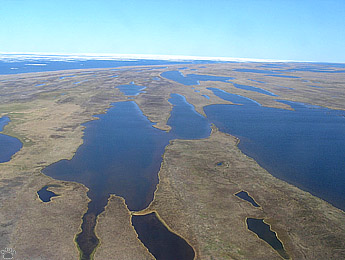 |
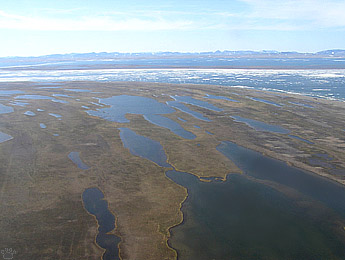 |
| Aerial views of lake tundras covering Belyaka Spit, Chukotka. |

Sea ice off Belyaka Spit. |
Spits along the northern coast of Chukotka are sometimes surrounded by sea ice until July. |
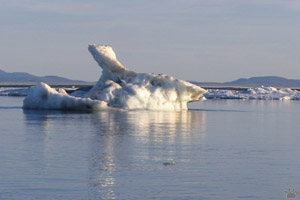
Sea ice off Belyaka Spit. |
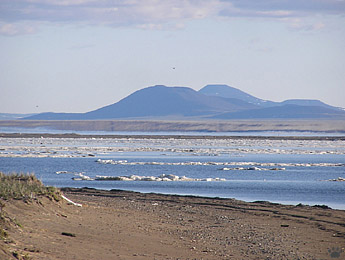 |
 |
| Sea ice off Belyaka Spit. |
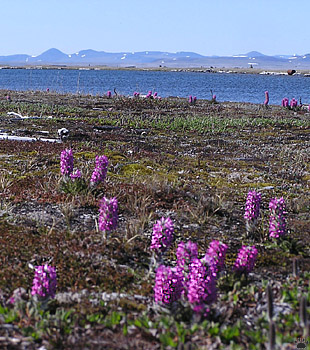
Belyaka Spit. |
There is special beauty to those strips of young, fragile land - barren and desolate at first sight, full of gentle life and subtle complexity at closer look. |
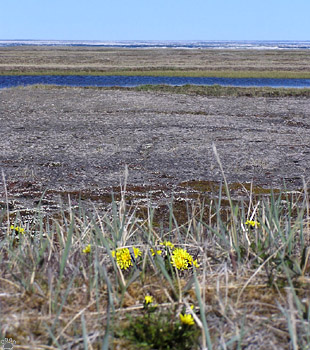
Belyaka Spit. |
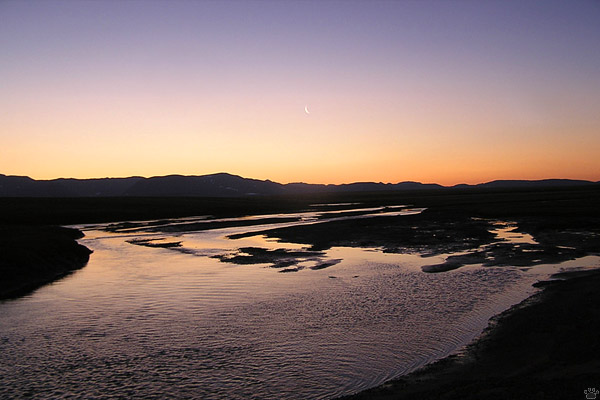
Tidal flats, Russkaya Koshka Spit, Chukotka, Russia. |
Part 5. Lowland tundra
Back to Part 3
Home
|